Heyfield Mobile Support Crew
Crew Member Memories
"In the mid 1960's, Ted Gill, then Chief, Division of Forest Protection with the FCV, introduced the concept of Mobile Support Crews (MSC)".
"Each MSC had fifteen to eighteen students and was self-contained, with vehicles, radios, camping and firefighting equipment, including chainsaws, rakehoes and axes. Depending on where it was based the MSC may have included a camp cook."
"MSC's were variously based at or within the Benalla, Bruthen, Broadford, Heyfield and Stawell Forest Districts, or later in the subsequent Bairnsdale, Benalla, Horsham and Traralgon/Central Gippsland Regions of Conservation, Forest and Lands."
Source: Mobile Suppport Crews.
See also: John Wilson - John was the FCV Overseer who led the Crew.
See also: Crew Members
Kester Baines
(bio)
I worked on the Connors crew for four consecutive summers, from Dec 1968 – Feb 1969, then Jan-Feb 1970, ‘71 and ‘72, being a leading hand on the ‘71 crew and senior leading hand in ’72.
Our first fire was in the Buxton-Taggerty area, which started on the same day as the bad Lara fires (8 Jan 1969). We worked in the Black Range, Royston Range and Blue Range and were there for five days. All up we worked on 13 fires over the four summers, mostly lightning strikes in the high country, but one near Mt Roundback on Wilsons Prom was also quite large. But our first was the worst – it’s the only time I’ve been in a fire that was crowning at times. Scary!
John Wilson was our boss and he was a very strong and fit man. He was strict but fair and we got on well with him. Our cook was Peter Thomas.
Our vehicles were two 11 seat Dodge buses and a traybody Toyota LandCruiser. Once, after rounding up a lightning strike in the Macalister headwaters, we had only the Toyota to get us out. We had the entire crew and all our gear on that ute, no OH&S to worry about then, and it ground its way up the Butcher Country Spur track and never missed a beat. Incredible.
Non-firefighting work was seedcutting (alpine ash and a little shining gum), scrub cutting along roads, and equipment maintenance. We also helped out with Athol Hodgson’s Phoschek drop-pattern experiments with the Twin Otter from Canada, on the Snowy Plains airstrip, in front of the 1970 FAO Fire Study Tour group. The crew enjoyed a joyride over the Wonnangatta Valley at the end at proceedings.
Ollie Parnaby
My first crew was in the 69/70 summer. We started in January and were not called to one fire that year, much to our disappointment! I then worked on crews in 70/71, 71/72, 72/73, 73/74 and 75/76. I think in my last season, we were at Surveyors Creek and again were not called to a fire.
In Feb. 1974, I left the crew early to replace Dick Noble on the Mt. Useful fire tower for about 6 weeks - one of the happiest solitary interludes of my life.
The Mobile Support Crews were a wonderful experience. They got me out of the city into a healthy lifestyle for 2 months and there was always a great camaraderie among the crews.
Tim Clark
In late 1966 the Victorian Forests Commission was hiring university students for several bushfire-fighting crews. They were to be called Mobile Support Crews, designed to back up the regular forestry crews as needed during the fire season. I jumped at the chance, and was offered a position.
Each crew was eighteen strong, and a couple of us were designated as drivers. I was randomly chosen, and at Melbourne HQ we had to drive around the block to prove our credentials. The second driver had arrived with his own car, an old VW beetle. So another member of our new crew, Ewan, volunteered to drive the VW to Broadford while the rest of us piled into the two mini-vans allocated to us. We headed for Broadford, an hour up the highway, settled in to our simple huts and waited in vain for Ewan and the VW. He limped in as the sun was going down. He’d missed the turn-off and got as far as Wangaratta before the penny dropped. Ewan was ‘Wanga’ from then on. He was a big lovely guy, and one of a great team.
We were self-contained with our own vehicles, communications, chainsaws, rake-hoes and camping gear. We lived in these rough forestry camps for the three months of summer, and were trained on the job by our allocated Forests Commission boss. The regulars soon dubbed us young upstarts the ‘hot-shots’. It wasn’t meant as a compliment, so we had to prove ourselves by knuckling down and working hard.
After the first summer at Broadford in ‘67/68, I was at Connors Plains for the next few seasons, in the high country north of Heyfield. Connors also received crew members from the prior year’s Stawell crew, supplemented by four FCV permanent staff from DFO Jeff Brisbane’s Mansfield team. These were Alan Falkingham, Kevin "Wings" Holland, Ray Trenfield and Neville Horan.
Our key job was to fight fires in inaccessible parts of the bush, usually started from lightning strikes, and which could not be reached by vehicles or bulldozers. We would drive as close as possible to a fire, or even be flown in to remote airstrips, and then sometimes hike in with rucksacks containing our food and sleeping bags. We cut trails by hand along the edge of the fire. These were tracks around a metre wide and scraped down to bare earth, designed to starve the fire edge of fuel. This technique could be quite effective when the fire was burning on the forest floor, but clearly no help if it was crowning. We would patrol these tracks day and night, and cut fresh trails around any outbreaks.
At this time the biggest danger was from burnt trees that could fall silently and without warning. As any forester will tell you, these are a classic example of the ‘widow-makers’, the ever-present danger of working in the forests. Once a fire was under control and there was time for sleep, we would roll out ground sheets and sleeping bags inside the burnt area. This way, in theory, there was less chance of being burnt alive. But on one occasion I awoke to find my backpack alight and cans of food fizzing and exploding overhead like incoming missiles. I had left it on a hot spot which hadn’t quite been extinguished.
There were two accredited drivers in the team and two Dodge minibuses 1, so when fires were a long way off it could mean long hours at the wheel. This was well before the concept of OH&S had reached its full flowering. There were no relief drivers, so I would sometimes have to drive into the night while the others slept in their seats. I made sure someone else was awake to prod me if I fell asleep at the wheel. It was a miracle we weren’t all wiped out.
There were minor accidents with axes, and one serious incident when we were working on a fire. We were being driven on a rough fire-track in the back of local vehicles when the canopy and temporary seating on the tray of one Toyota was dislodged and toppled off, along with the occupants. A couple of our crew were a bit knocked about, but thankfully ok.
When there were no fires we felled trees and collected the seed to be used for replanting logged forests. We were kept fit with regular runs, and sometimes before breakfast we’d be driven five kilometres out of the camp and told to run back. One year we did a thirteen-kilometre run down the hill, just because we thought it was a good idea at the time. 2
John Wilson was our Forestry boss. He was a good man, and firm but fair. There were times when he suspected, not without good reason, that we were slacking on the job when we were working locally. One day when we were clearing the culverts on the road down to Licola he came to check on us, turned off his engine and rolling silently into view. Sure enough we were sprung.
Our camp cook was Peter Thomas, a wiry old shearer’s cook, who kept us well fed with basic fare; eggs and bacon for breakfast, steaks and sausages for dinner. He never seemed to eat himself, content with an occasional swig from a bottle of beer in a brown paper bag. But Peter was always able to turn on a hearty meal, wherever we were in Victoria.
When we had weekends off we could choose to drive back to Melbourne or stay in the camp. The camp had become a second home, and we made our own fun. We created a primitive three-par golf course on a bit of open land in the forest. I had a 22 rifle and from our huts we would take pot shots at the rabbits. There were card games, music and plenty of reading. No electronic devices in those days!
And these were the days before free university education, so the money we earned was vital to help get us through the year. They were good times and it was a great job… in many ways a privilege. I became the senior leading hand in ‘71 and I look back on these experiences as some of the best of times.
1Kester Baines recalls that the Dodge buses were brand new in December 1968, with 329 cu.in. V8 engines.
2Ron Gold remembers wrangling fence posts and Number 8 wire at Connors under John Wilson’s watchful eye. He also remembers running nonstop from Connors Plains camp to Licola on the last crew day in 1970. He says “How I did it is still beyond me. I think it was 14 miles and I couldn't walk for 3 days afterwards.”
Gordon Cleary
(bio)
I suspect I wasn’t the only Forester’s son to be told “Don’t muck up” when heading off to join the crew. I recall sharing the work ethic with a Parnaby, two Edgars and a Harrop in my MSC time, all of us with old school Foresters as Fathers, so we had to pay attention. Crew Boss John Wilson handed me a chainsaw early on and said “This is yours. But be focussed – the previous operator nicked his knee and the one before that nicked his nose!” Focus was easy after that, especially under the watchful experienced eye of the incomparable Charlie Fitzpatrick, a permanent operator from Heyfield who dropped the biggest trees for seed.
Like Kester Baines, I remember that over-loaded Landcruiser trip out of the Butcher Country after we’d cleaned up a lightning strike in 1971 – but that wasn’t the only thing that stuck in my mind. When we got down to the fire, south-east of Mt Clear, near the junction of Peters Creek and the Macalister River, I was struck by the size of a few very large eucalypts sitting on little islands of ground around which small streams were flowing. The spot has been marked on my Macalister River Watershed Map for 50 years. They may not have survived the repeated Alpine fires of this century but I’m determined to convince my 4WDing offspring that down that spur is where I need to get to again.
My five most vivid HMSC memories have lasted around fifty years - memories not always of testing times in wild locations, with danger close, in the company of men, and always at a map junction. Each is described below.
1. A Cut Above
Fitness was a key part of being on a Mobile Support Crew and fit young males seek a physical test. I recall a short-lived gladiatorial sport that had two lads, clad only in towels and fresh from the shower after the morning run, tackling each other in a ring of spectators while each was armed with a leather glove and a large scotch thistle, of which an abundant supply grew around the camp. I also remember early on there were Greco-Roman wrestling bouts but the morning runs and the general workload soon put the kybosh on that silliness.
We ran about 5 km each morning. Depending on Crew Boss John’s mood on the day, it could be all uphill or all downhill. That didn’t matter to Peter Toyne, a ‘71 crew member who was a very handy runner. No matter where John started us on the Licola Road, Peter was always first in the shower and first to breakfast. 3
Bush-Bungee had you climbing a sapling at least 20 or more feet tall, bending its trunk as you climbed and, if your luck held, being slowly lowered to the ground by the arching tree. If your luck didn’t hold, neither would the tree and the descent was more rapid.
We were occasionally cerebral, rather than physical. I shared a bunkroom with Big Johnny who had a small plastic record player and played Jethro Tull’s Stand Up album for the entire summer. On one memorable night, with Tull’s “Bouree” wafting out, we sat outside our huts reading at 10 o’clock at night. What was unusual was that no electrical light was switched on - the summer sheet lightning was so bright and so frequent that we had no difficulty in reading outside in the warm wind.
When we weren’t on the fireline, we were generally cutting seed. The seed-cutting technique on eucalypts was well known to every Crew over the years. What differed however was the particular eucalympic games that each crew favoured to stave off boredom and routine on those long, hot summer days.
It’s not that we were looking to slack off. But you had to recognise the impact of the Heyfield AWU representative when he fronted up at Connors Camp and extracted $15 with menaces for union membership from us, all impoverished University students with a then poor sense of solidarity. We pored over the AWU Award document he left with us and learned many useful things. It took, it seemed, only 7 drops of rain on a cigarette paper in a minute to justify downing tools. It was a shame John Wilson didn’t smoke or we’d have tried it on.
“Stretch” is that knife-throwing game where you and your opponent stand facing each other with your feet initially together. Each takes turns in sticking a knife into the ground out beside the opponent’s foot, forcing him to stretch his legs wide enough to step out to the knife. The aim is to have your opponent fall through over-stretching.
We generally didn’t have knives with us on the crew – but we had sufficient machetes for every man to be equipped. Since these were too big for a close-quarter contest, an alternative was derived that suited our temperament and circumstances. The winner simply had to stick his machete into a tree higher than anyone else could. The task was not as simple as it seems but was made for a spectator sport during seed-cutting. Usually your machete clattered off the target tree, requiring some burrowing in the undergrowth to retrieve it. Occasionally there’d be a hit and the requisite cheer was given.
The occupational hazard with the game was John Wilson’s habit of rolling his silent vehicle around a bend on the Licola Rd near the seed cutting site. His purpose was plain and the consequences foreseeable. He wanted confirmation that the Commission was getting its pound of flesh for the trouble it was going to in feeding, training and paying us.
One particular day in 1971 when the silent Wilson vehicle suddenly rolled up alongside us, with a very loud Wilson inside, we all leapt to frantic machete slashing, all motion, with leaves and gumnuts flying, trying desperately not to stand out in the crowd...except that is for Big Johnny. He stood motionless, empty-handed, staring at John Wilson as he stared back at him. Then Wilson eyes followed Johnny’s eyes until both sets came to rest on the machete impaled 10 feet up the trunk of a nearby tree. We gave him a big cheer later; much, much later.
2. Ted & Athol’s Excellent Idea
Before a network of link roads and jeep tracks criss-crossed the Victorian Alps and helicopters were plentiful, getting food to fire fighters in rough country was problematic. At the request of FCV Fire Protection Chief Ted Gill, who’d spotted something interesting on his 1964 Fire Study tour in USA, Athol Hodgson, FRO, designed a sturdy cardboard supply boxfor use in dropping packaged food by light aircraft to fire crews.
Roped “fins” set up a spinning action which stabilized and slowed the fall so that the box spun and floated to earth, landing on its cushioned end and leaving the food intact and easily retrieved. This was a really useful tool...unless you happened to be lying on the ground under the trees when the boxes arrived...and unless there’s not just you but half of the Heyfield MSC sleeping silently after a day and a night on the fireline!
We’d left Connors Plains many hours before and come in from the Myrtleford side, heading along in Landcruisers to get to a spur above a lightning strike on the Razor. We’d left our vehicles on top of the spur and walked down to the action. After a double shift overnight, Crew Boss John Wilson decided to spell half the crew for a couple of hours, then swap, so we chosen promptly stretched out beneath the trees and went to sleep.
Soon after, about mid-morning, a very helpful Pawnee pilot arrived on despatch from a higher power. He could see crew mopping-up across on the fireline, so decided he’d save the weary crew a long resupply walk by dropping the food boxes directly onto their camp, where he could plainly see lots of gear but no movement, intermittently through the tree canopy.
So down they came, spinning in the required manner at the required rate of descent...until they hit the treetops, when the fins were torn off and the boxes plummetted to earth, hammering into the ground mere feet from the head of a startled HMSC member. Our Leading Hand really didn’t need a radio to convey our urgent message to the pilot, who shortly afterward decided to seek his home base (probably Mansfield) soonest. We retrieved the broken boxes and surveyed the offering. One box had intact tins of Cottee’s jam, wrapped in a jumble of loaves of damaged sliced bread. The other had tins of Irish Stew, several bent and others split and oozing, with Arnott’s Full O’Fruit sultana (aka squashed fly) biscuits floating around in the stewy mess.
We went back to sleep, warm in the knowledge that Ted and Athol had thought of us.
3. A Cleansing Dip
In early 1971, continuing our rip-snorting fire season, they sent us as back-up from Connor’s Plains to Wilson’s Promontory National Park, where a lightning strike near Mt Roundback, north of Five Mile Beach, was causing some grief, as fires at the Prom, one of Victoria’s most-loved parks, always do.
On the way there, Big Johnny and I were regaling any who’d listen with stories of the previous summer, since prior to us joining the Heyfield Crew, I’d joined Johnny on the WPNP summer toilet crew. For $34/week, we had to clean 11 toilet blocks twice a day – once cleaned, our time was our own and available for sun, surf and associated activities. We told the crew that the fine, pristine white granitic sand of the Prom’s beaches was one of life’s great pleasures and enthused about our swimming opportunities once our fire duties were over.
Now the beaches may be pristine but burnt coastal scrub is anything but. By the time an FCV 4WD tanker joined the fight, the blaze had taken a fair lick of country and, though not as rugged as the high country, the burnt area was pretty broad and mopping up amongst the rolling dune country soon had us all as black as the ground we were walking on.
Eventually, we were relieved and, as one, headed off in single file towards Three Mile Beach for a cleansing dip. There was a spotter plane overflying the scene and he spotted us striding purposefully towards the breakers. Callsigns now lost forever must have been exchanged, the upshot being:
Crew: “Beach for a swim.”
Plane: “Have fun”, he replied, “I’ve just counted 87 sharks.”
As we trudged glumly back to our buses, our mood as black as our bodies, not much was said as we tried to visualise what meeting 87 sharks would have been like. We also wondered how our collective demise would have been handled by the FCV Fire Protection staff of the day.
In the end, we were grateful that we were in Con Wood’s era of “Plane Forestry” and as a result, lived to tell the tale.
4. The Bugs of Raak
In early 1975, they had a poultice of lightning strikes in the Mallee and in 2 months some 60-odd fires had burnt over 90,000 ha of state forest and national park, mostly non-commercial. They moved lots of crews, lots of tankers and lots of aircraft into the region and dropped a lot of retardant. They sent us into the Mallee to relieve a first attack crew at the Raak Plain fire near Hattah Lakes, west of the Calder Highway. By the time we drove there from Connors Plains, we were well rested and already on triple time, so they put us straight at it.
It was a big enough fire, the edges docile and the front roaring along with a north-westerly behind, the Mallee gums and spinifex fairly exploding in the heat. They set us at a sensible windward distance ahead of the fire, then pressed the go button. We’ve never done a faster step-up routine in our lives – we were all literally running between positions, the spinifex and burnables flying behind us as our rakehoes cleared a fire trail well over 2 metres wide. No high country granite and slopes slowed us down here.
One of the the most noticeable results of the fire was the array of insects that were fleeing the flames or being blown at us by the wind – grasshoppers and phasmids, some of epic size, over 250mm. Eventually, our fire went quiet, leaving plenty of tricky mopping up in and around the multi-stemmed Mallee gums.
However, more excitement was in store. A small but loud spot fire suddenly got going in nearby unburnt country to the west so they grabbed a Forest Overseer and me (a Senior Leading Hand), put us into a small helicopter and dropped us at the spotfire with orders to put it out. Well, I had a rakehoe and he had a backpack radio and a half-axe. The burn was going like the clappers and a half-axe isn't much use in spinifex. We very soon had to rush around the fire edge for safety in the newly burnt out area. He went to radio in for pickup only to discover that he'd forgotten the aerial. After they belatedly sent the chopper back for us, and we'd landed safe and sound, John Wilson gave him a quiet earful about a great many things.
But our day of colour and movement was still not over. We’d stripped out of our fire rig and were lying around the Raak firebase cooling off in our jocks when the radios started squawking. Shortly, John Wilson’s screaming at us to grab our gear, load the Dodge buses, get out onto the Calder Highway and head north until we found a fire by the road. A drive-by firebug had decided on more excitement and the CFA lads who’d discovered it couldn’t hold it.
We dressed our Dodge driver from jocks to fully booted fire gear while he drove flat-chat up the Calder. The blaze had burned about 5 acres by the time we’d finished cutting a trail right around it and back to the road, in time enough for John Wilson to light up a backburn and stop it in its tracks.
But before that happened, about halfway round, while it was almost impossible to see for heavy smoke, especially with your head down raking, the biggest olive-drab coloured Phasmid in the world, a giant six-footer with large shiny bulbous eyes on a huge round green head, appeared through the swirling smoke and came towards us. Those nearest the critter reeled back - me included – until it pushed its Australian Army helmet visor up, said, “Turn your trail towards the road” and stepped back into the smoke to be choppered out of our lives as swiftly as he came.
We left Raak Plain, and its bugs, satisfied with our work and turned home for Connors, if not wiser men for the journey, then certainly richer.
5. Ultima Thule
From the first season at Connors, Crew Boss John Wilson had reserved a single man’s hut down the hill at the back of the camp. He usually lived in Heyfield with his wife Eunice and drove up to Connor’s to direct crew activities, staying over as needed.
After every fire that the Heyfield Crew attended, John would get out a small tin of red paint and a fine paintbrush and add the fire’s location to his growing list beside the doorway of his hut. As the seasons went by, the “HMSC Honour Roll” grew, to be inspected and talked about as each new crew learned of its existence.
During the 1974/75 season, the powers-that-be decided to move the Heyfield MSC from Connor’s Plains to Surveyor’s Creek Camp. The much-loved Connor’s Camp, which had served so many for so many years, was decommissioned and abandoned.
Nearly two years later, when next I swung off the Licola Road through the Connors gate again, in late 1976, the site was in poor shape, thick with thistles and many of the weatherboards on the huts having been ripped off for firewood. But down the back, hidden largely from the public gaze, was John’s hut, with the Roll still in place.
It just didn’t seem right to leave that history to the whim of a lazy vandal – so, on behalf of every crew member who’d ever battled a blaze under John Wilson’s guidance, I carefully removed the 8 or so metre-wide boards that made up the Roll and drove them back to Melbourne.
By that stage, John had left FCV and he and Eunice had taken over the licence of the pub at Ultima, a Mallee town far from the Gippsland high country in which he had spent so much of his working life. So when I had to do a trip to Swan Hill around Christmas that year, I detoured via Ultima. I’d mounted the Roll onto a backing board and had it in the boot of my hatchback.
It was late morning when I walked in to see John manning the bar. “G’day”, I said, “Do you remember me?” “Tim Clark?”, he asked. On that unhelpful note, I put him right and said “I’ve got something for you”, so he followed me outside. I’d hoped that the effort would be worthwhile and seeing the emotions chase across the face of an outwardly hard man when I revealed the Roll, I knew it had been. But I made sure I left before he had to ask Eunice where the hell he was going to put the precious relic.
3 He twice came third in the Stawell Gift, winning five Victorian championships over 400 and 800 metres, and breaking world records over 550 metres and 600 yards. He was a Labour Party member of the Northern Territory Legislative Assembly from 1996 to 2006, representing the rural electorate of Stuart and serving as Attorney General.
Gallery
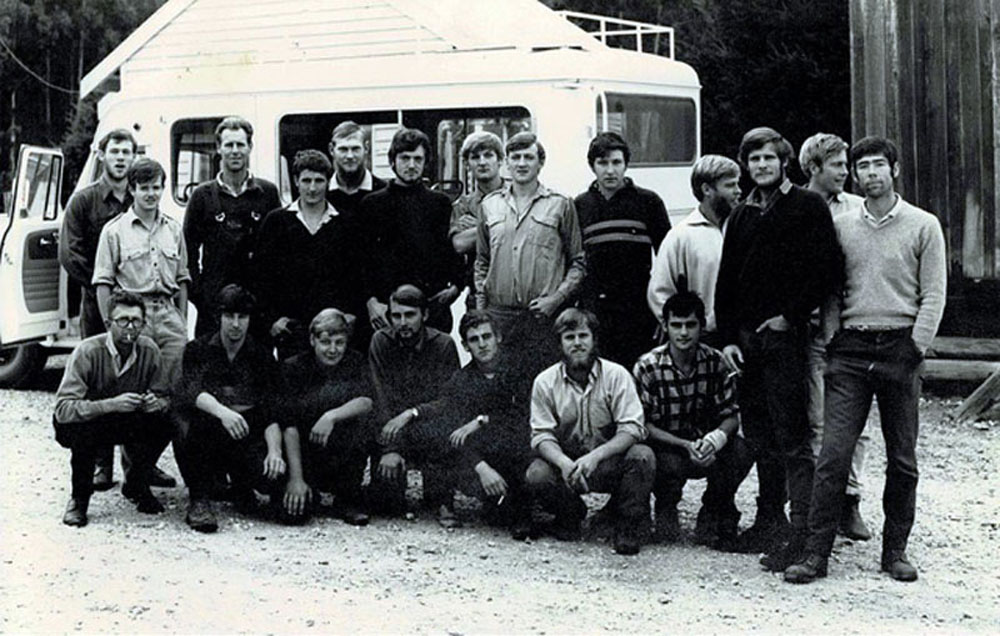
Heyfield Mobile Support Crew at Connors Plains, Heyfield FD
Standing (l to r) Dave Buckle, Kester Baines, John Wilson, Alan Falkingham (FCV Mansfield), Dick Noble, Peter Fitzpatrick, Euan "Wanga" Thompson, Tim Clark, Kevin "Wings" Holland (FCV Mansfield), Brendan Lay, Dave Hannah, Tim Hannah, Ian Walkley.
Squatting (l to r) - Peter Thomas (Cook), Ray Trenfield (FCV Mansfield), Lex Wade (FCV Mansfield), Craig Irvin, Neville Horan (FCV Mansfield), Ross Foster, Robin Young
1968/69
Source: Dick Noble
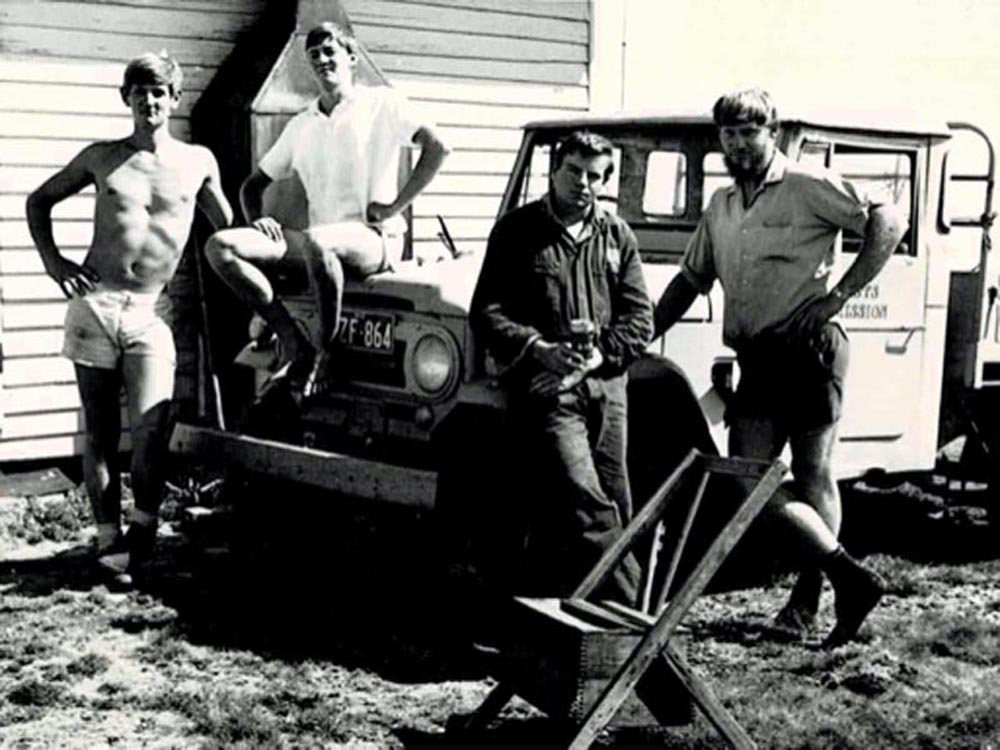
MSC group at Mt Skene - (l to r) Euan "Wanga" Thompson, Tim Clark, Gary Clark (towerman), Dick Noble
1969
Photo: K Baines
Source: Dick Noble
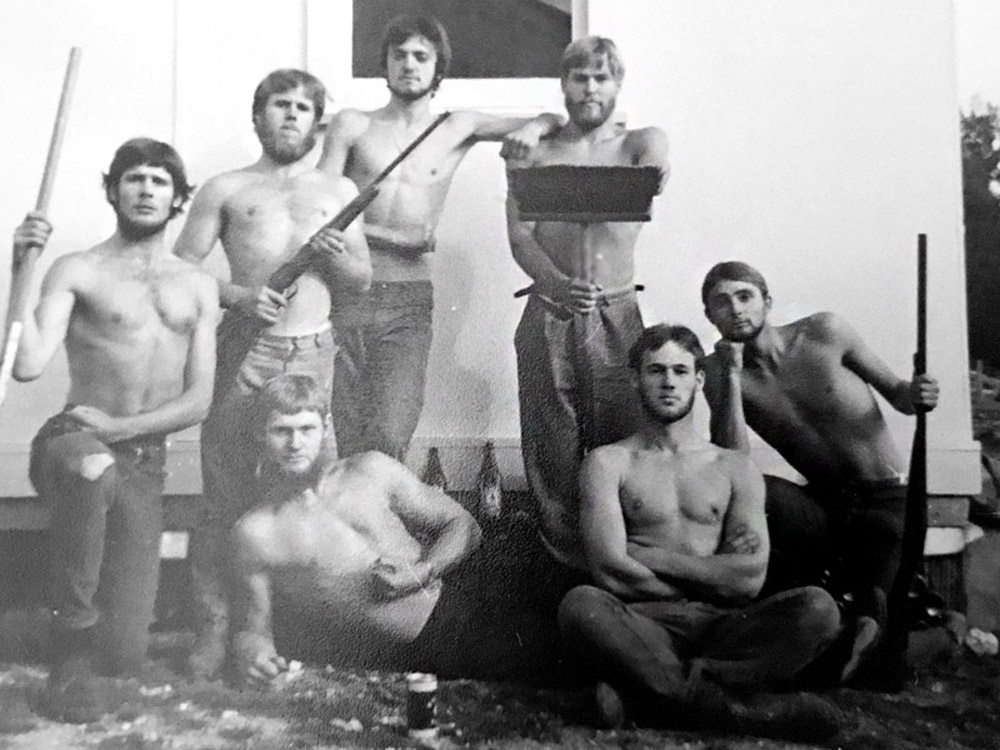
"The Outlaws" at Connors Plain - Back (l to r) Dave Hannah, Ross Foster, Peter Fitzpatrick, Brendan Lay, Craig Irvin. Front (l to r) Dick Noble, Dave Buckle
1969
Source: Dick Noble
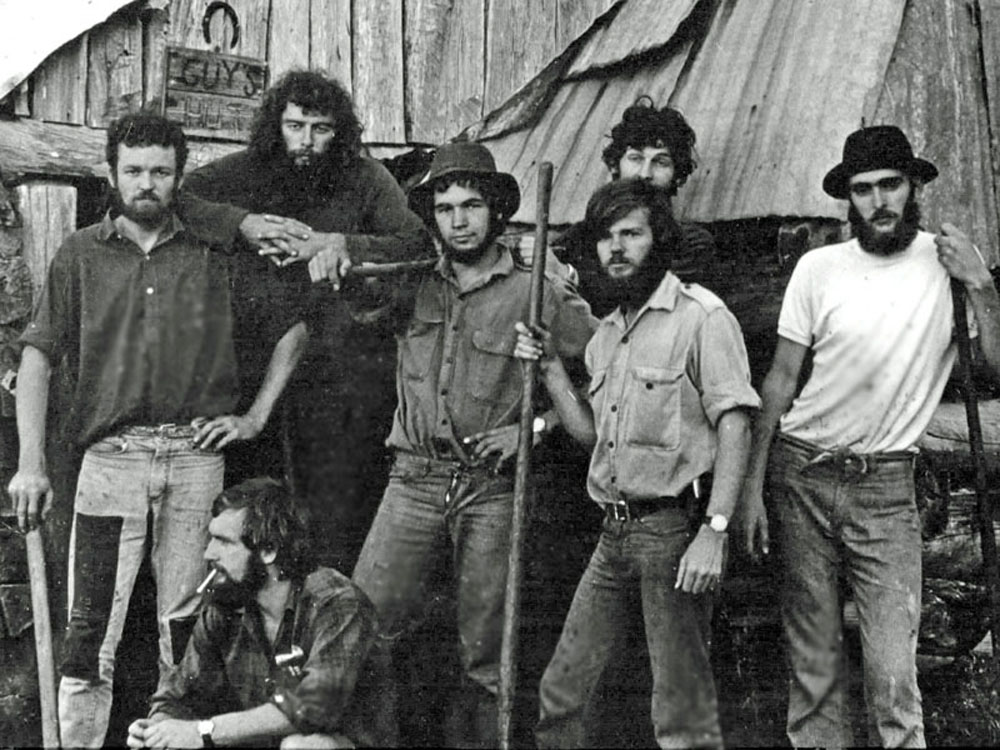
The Beard Gang at Guys Hut - Standing (l to r) John Lewis, Ollie Parnaby, ?, Kester Baines, Nick Legge (behind KB), Mick Jolly. Crouching ?
1972
Source: K Baines
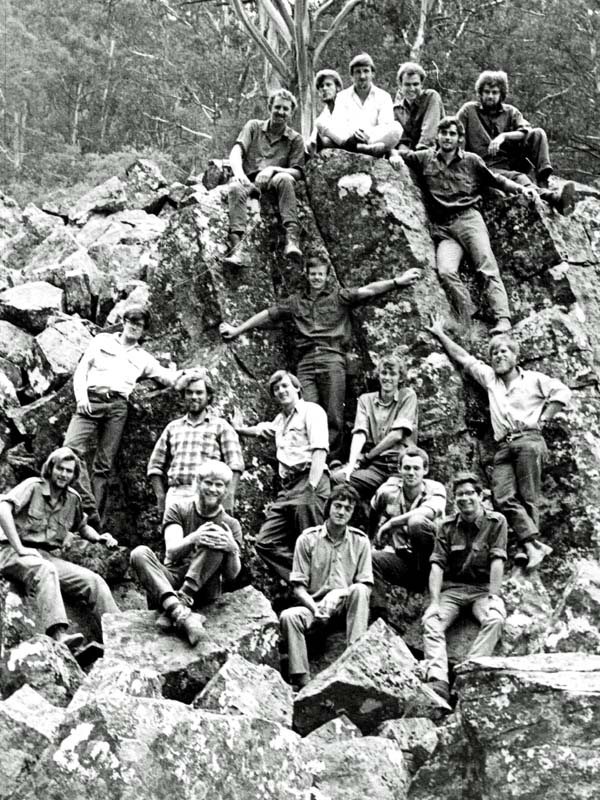
Heyfield Mobile Support Crew at Macalister Springs, Heyfield FD : Back row seated (l to r) - John Baxter, Dave Hannah, Brian Jones, Tom Stone, Ollie Parnaby. Next row standing (l to r) - Andy Hannah, Kester Baines, Robin Young. Second front row (l to r) - Tony Maine, Tim Clark, Pete Eastaugh, Ross Foster. Front row (l to r) Gerry Fitzpatrick, Dick Noble, Peter Fitzpatrick, Dave Buckle, Ron Gold.
Absent - Mike Lakeland, Peter Thomas (Cook)
1969/70
Photo: J Wilson
Source: Dick Noble
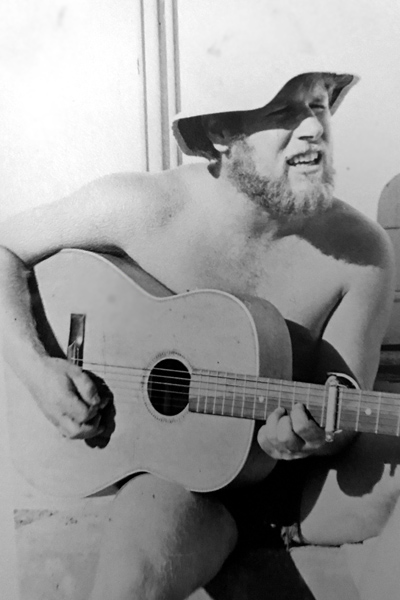
Ross Foster
1970
Source: Dick Noble
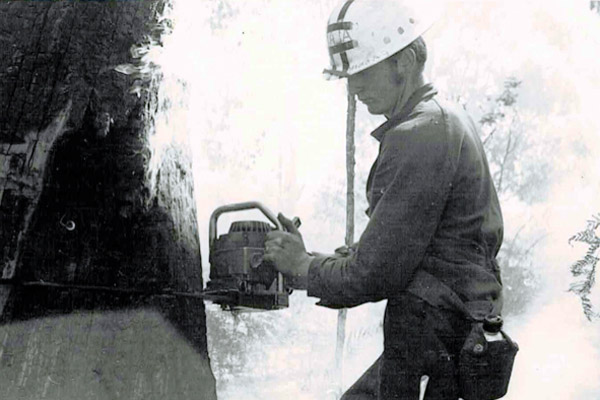
Alan Falkingham, FCV Mansfield
on secondment to Heyfield MSC
1969
Source: T Clark
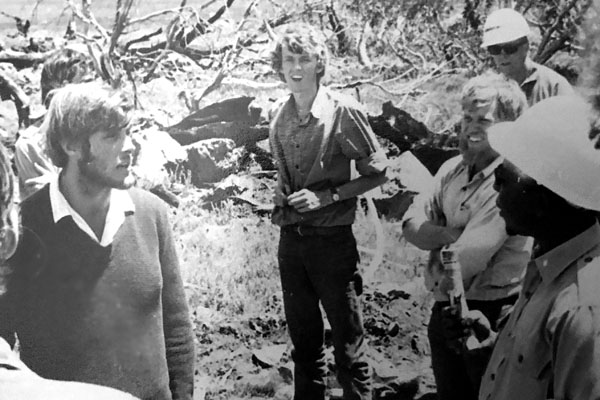
FAO group with Heyfield MSC members at Twin Otter trials at Snowy Range
The three easily identifiable MSC members are:
(l to r) David Hannah, Peter Eastaugh, Ross Foster
1970
Source: Dick Noble
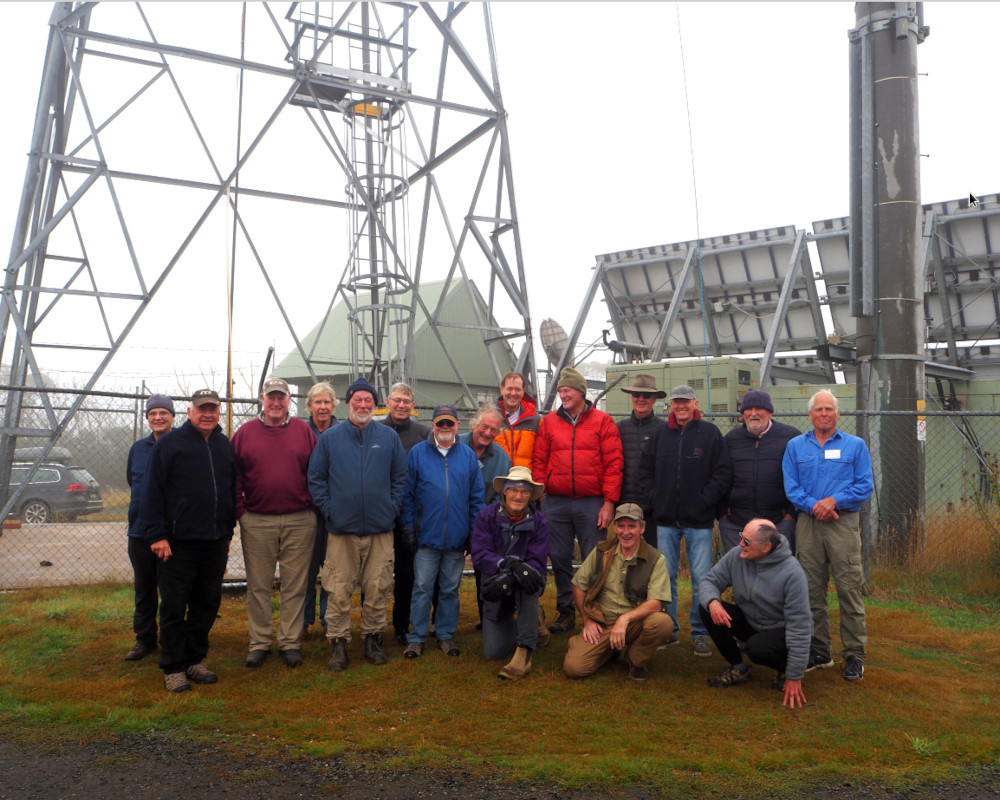
Heyfield MSC Members (1966-1976) in April 2023 at Mt Useful
Standing (l-r) Rick Michael, Alex Danischewski, Chris Slattery, Malcolm Urie, Dave Buckle, Rod Connley, Kester Baines, Nick Legge, Paul Champion de Crespigny, Dick Noble, John Urie, Tim Clark, Euan Thompson, Bren Lay. Kneeling (l-r) Roger Harrop, Gordon Cleary, Andy Hannah.
Source: G Cleary
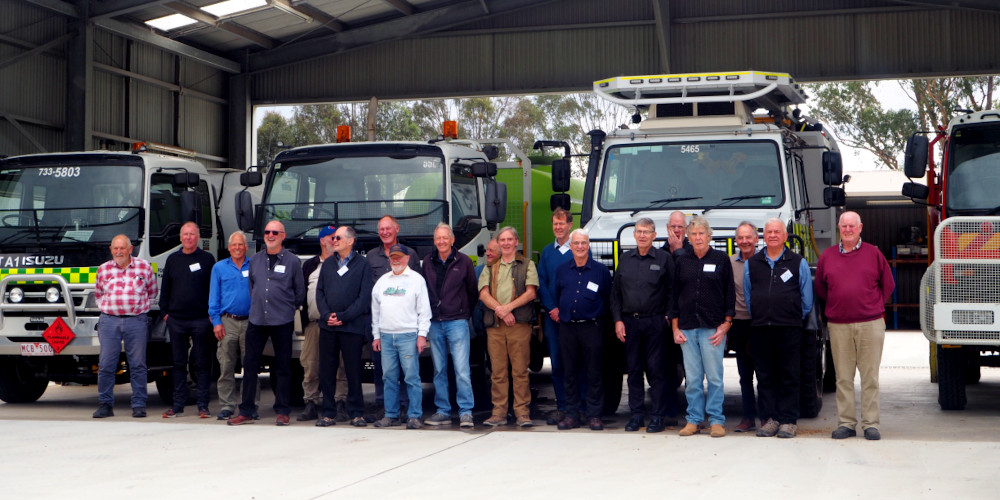
Heyfield MSC Members (1966-1976) in April 2023 at Mt Useful
l to r- Euan Thompson, Tim Hannah, Bren Lay, Peter Fitzpatrick, Dave Buckle, Andy Hannah, Dick Noble, Kester Baines, Tim Clark, Nick Legge, Gordon Cleary, Paul Champion de Crespigny, Rick Michael, Rod Connley, John Urie, Malcolm Urie, Peter Howat, Alex Danischewski, Chris Slattery
Source: G Cleary
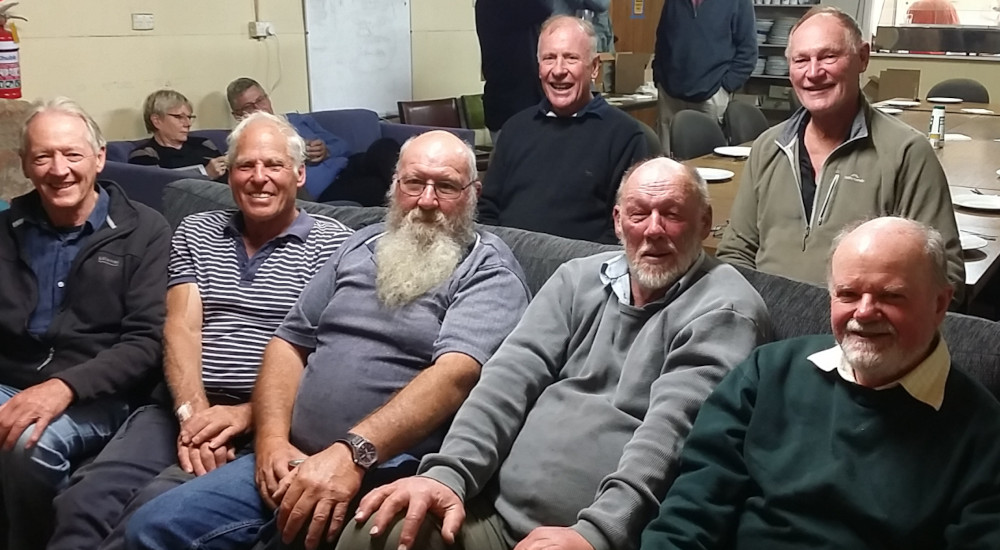
Heyfield MSC Members (1966-1969) in April 2023 at Surveyors Creek
Seated front (l-r) Tim Clark, Bren Lay, Kevin Holland, Dave Buckle, Kester Baines.
Seated rear (l-r) Tim Hannah, Dick Noble
Source: G Cleary
